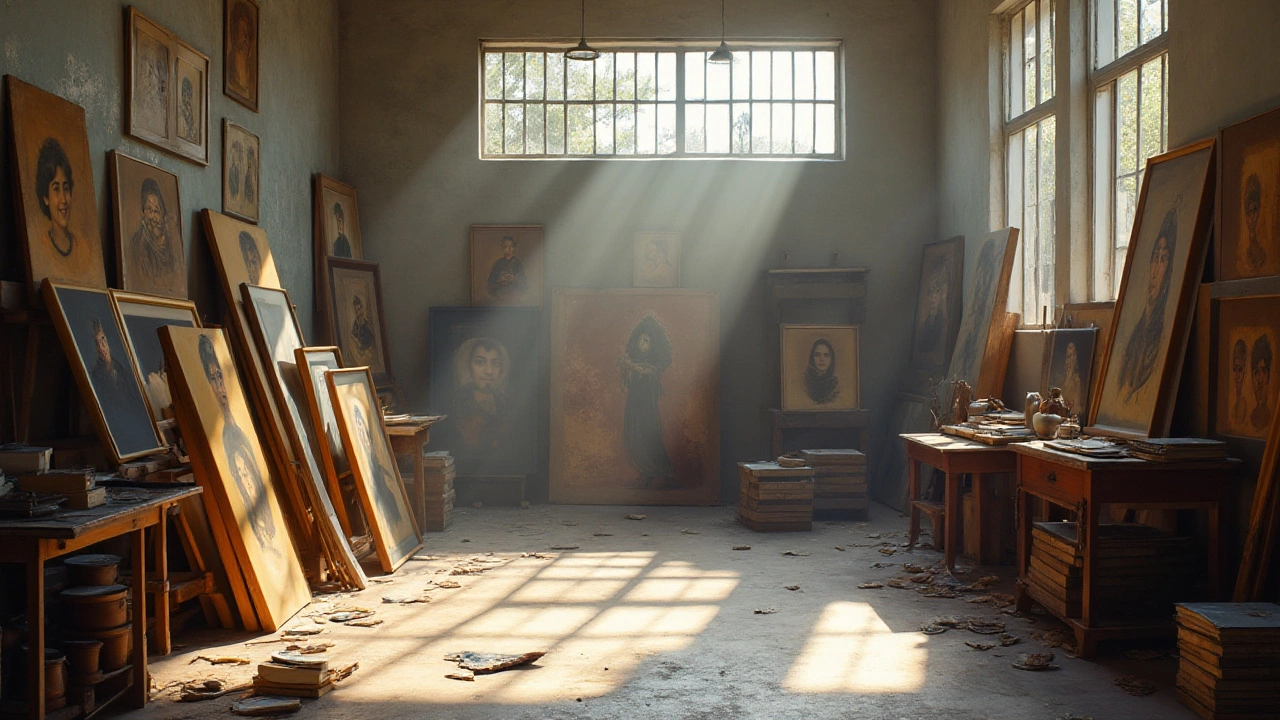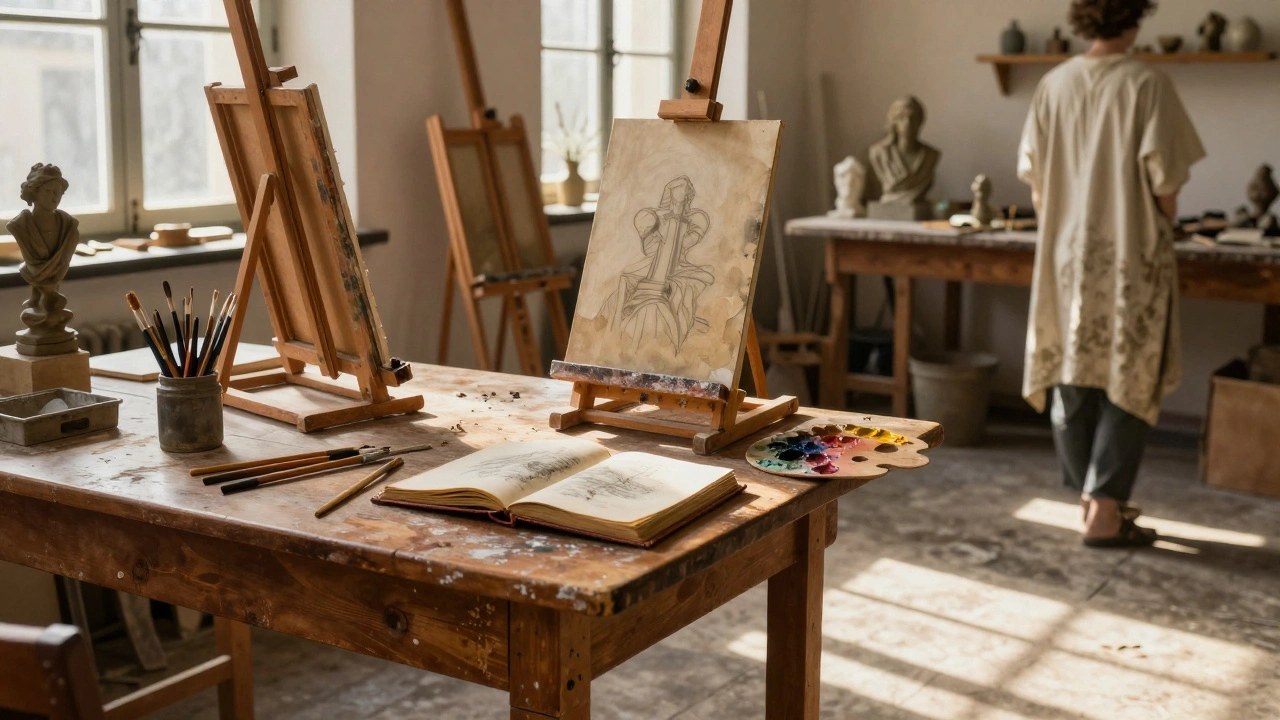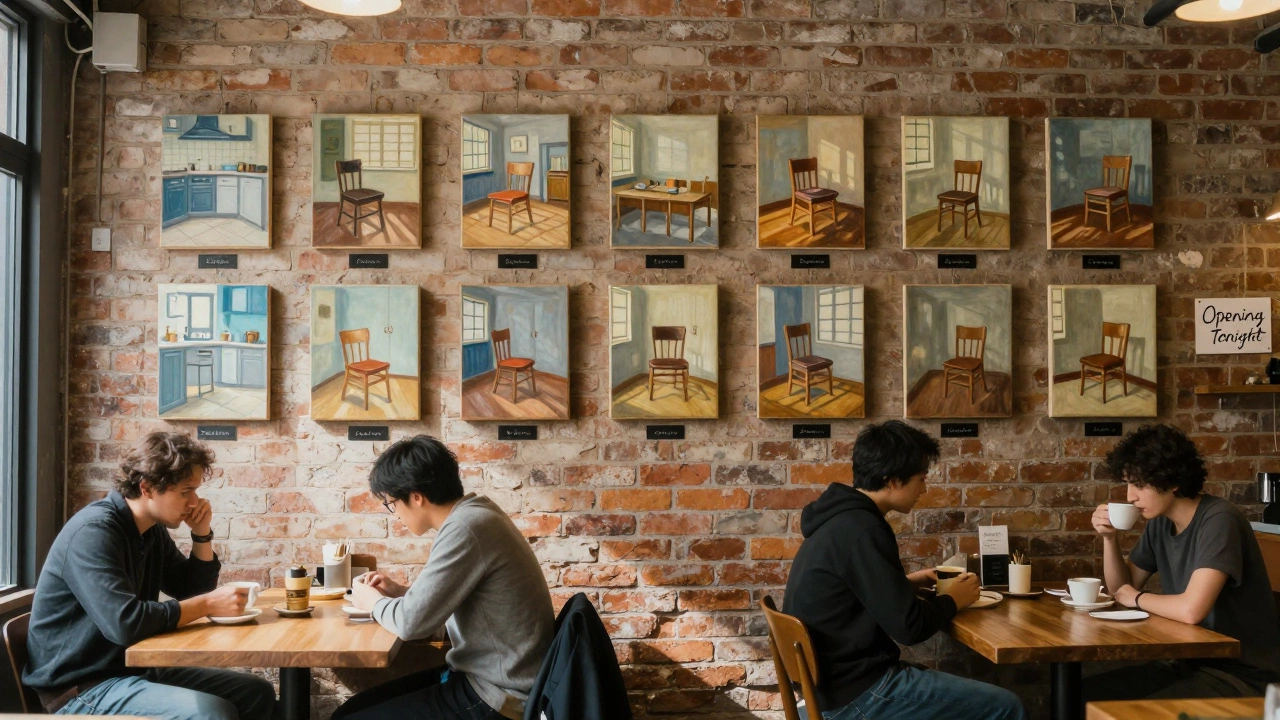Finding the perfect size for your portrait can be as pivotal as the subject itself. Whether you're inspired by the grandeur of historical figures immortalized in life-sized canvases or the intimate allure of a miniaturized depiction, the size of your portrait profoundly affects its narrative and reception. Throughout history, artists have grappled with this choice, often dictated by cultural norms, space, and personal preference.
Today, with contemporary art movements embracing varied expressions, understanding the nuances of portrait sizes can enhance your creative process. In this guide, we'll unravel traditional practices, explore modern influences, and offer practical tips to ensure your portraits resonate with their intended audiences.
- Historical Context of Portrait Sizes
- Choosing the Right Canvas Dimensions
- The Impact of Size on Emotion and Perception
- Practical Tips for Artists
- Adapting to Modern Spaces and Styles
Historical Context of Portrait Sizes
Portraiture has a rich history that stretches back thousands of years, each era with its evolving ideal of what constituted the perfect portrait size. From the ancient civilizations of Egypt, where portraits were carved on stone and clay tablets, to the sprawling frescoes in Roman villas, the size of a portrait often signified the status of the subject depicted. During the time of the Renaissance, portraits became a powerful tool for wealthy patrons to display their affluence and power. Artists like Leonardo da Vinci and Hans Holbein crafted portraits that were often life-sized or larger to emphasize the significance of their subjects. The Mona Lisa, for instance, though relatively modest in size, commands a presence due to its construction and perceived depth, demonstrating how size isn’t the only factor in impact but certainly plays a crucial role when combined with artistic technique.
In the subsequent Baroque era, portrait sizes began to take on more dynamic forms. This period was marked by an abundance of grandiose portraits that filled entire walls of palatial homes. The larger-than-life portraits of monarchs such as Louis XIV of France served not only as personal images but as a statement of the absolute power and divine right to rule. Such portraits would span several feet in height and width, surrounding the viewer with the embodiment of monarchical power. A famous example is Anthony van Dyck’s "Portrait of Charles I," which was not only remarkable for its life-size depictions of its subjects but also for the dramatic use of space and depth that gave these portraits an imposing presence.
The 18th and 19th centuries witnessed a shift towards more intimate portrait sizes, largely due to changing artistic tastes and the development of new ways of capturing images. The advent of the miniature portrait, a compact and private form popularized during the Regency and Victorian eras, allowed individuals to carry likenesses of loved ones amidst their personal belongings. These paintings were often no larger than a locket, presenting a stark contrast to the expansive canvases of royal courts. The shift to smaller dimensions was both practical and cultural, reflecting the burgeoning importance of family and personal affection over public display.
In the early 20th century, with the rise of modern art movements such as Impressionism and Expressionism, portrait sizes continued to evolve. Artists like Claude Monet and Henri Matisse toyed with the notion of size not just for practical reasons, but to challenge traditional perceptions. They experimented with dimensions that could evoke emotion differently, playing with scale to focus on intimacy or expansiveness. This era saw a greater emphasis on the intimate and personal in portrait art, often leading to a reduction in size to highlight the subject's inner character rather than their societal status.
Today, the choice of portrait size remains a key consideration for artists, a decision deeply intertwined with the message the artist wishes to convey and the space in which the artwork will reside. As artist Andy Warhol once said, "Art is what you can get away with." The power of art to transcend traditional norms can often begin with the choice of canvas size. This historical journey underscores the ways artists have long communicated cultural and personal narratives through their portrait painting, and how these artworks have been historical documents in their own right, revealing societal values, technological advancements, and individual stories through dimensions as varied as the stories they tell.
Choosing the Right Canvas Dimensions
Selecting the appropriate canvas dimensions is an essential step in the art of portrait painting, as it sets the stage for the message and impact your portrait will convey. The size of the canvas influences the viewer's perception and emotional response to the artwork. When choosing the right dimensions, an artist must consider factors such as the intended environment for the painting, the level of detail desired, and the mood or message the portrait aims to project. Historically, larger canvases were reserved for depicting individuals of high status, often showcased in grand halls to command attention and honor. On the other hand, smaller portraits were more personal, intended for close-up inspection in private settings.
When determining the perfect canvas size, think about the scale in relation to the subject matter. A larger-than-life canvas elevates a subject's grandeur, lending it a sense of majesty and boldness. Conversely, a smaller canvas can impart intimacy, drawing viewers closer and inviting them to explore fine details that might get lost in a broader expanse. This is especially important when capturing subtle expressions or intricate clothing textures. It can be helpful to sketch your composition first, allowing you to visualize different proportions and ultimately choose a dimension that best suits your artistic objectives.
Consider also the physical space where the portrait will be displayed. Will it hang in a cozy study, or dominate a museum gallery wall? A portrait's dimensions should harmonize with its surroundings, ensuring balance and enhancing aesthetic appeal. American painter Mary Cassatt once remarked,
"I think that if you shake the tree, you ought to be around when the fruit falls to pick it up." Her words remind us that once you've settled on a size, you must be prepared to handle the myriad creative and logistical tasks that follow, including frame selection and transportation logistics.
For practical sizing, standard canvas sizes like 18x24 inches for modest pieces or 24x36 inches for more significant works often provide a good balance between grandeur and manageability. Have an understanding of the canvas dimensions in mind before starting your painting; this prevents compositional adjustments midway, saving time and resources. Additionally, contemporary artists sometimes opt for unconventional dimensions, crafting unique artistic signatures by challenging traditional ratios. Whether broad and sweeping or compact and delicate, the canvas size is an integral component, influencing not only the physical presence of your work but also how it resonates emotionally with viewers.
- Think about the room size and wall space available for display.
- Consider how close viewers will stand or sit to the portrait.
- Visualize your composition in sketches before committing to one size.
- Explore unconventional sizes for distinctive artistic expressions.
Ultimately, choosing dimensions is not about adhering to rigid rules but about enhancing the storytelling power of your artwork. Each decision, from canvas size to composition, becomes an integral part in the journey of the art tips that breathe life into your portraits. Remember that this choice is part of a larger artistic puzzle, enriching your creative process and the reception of your work.
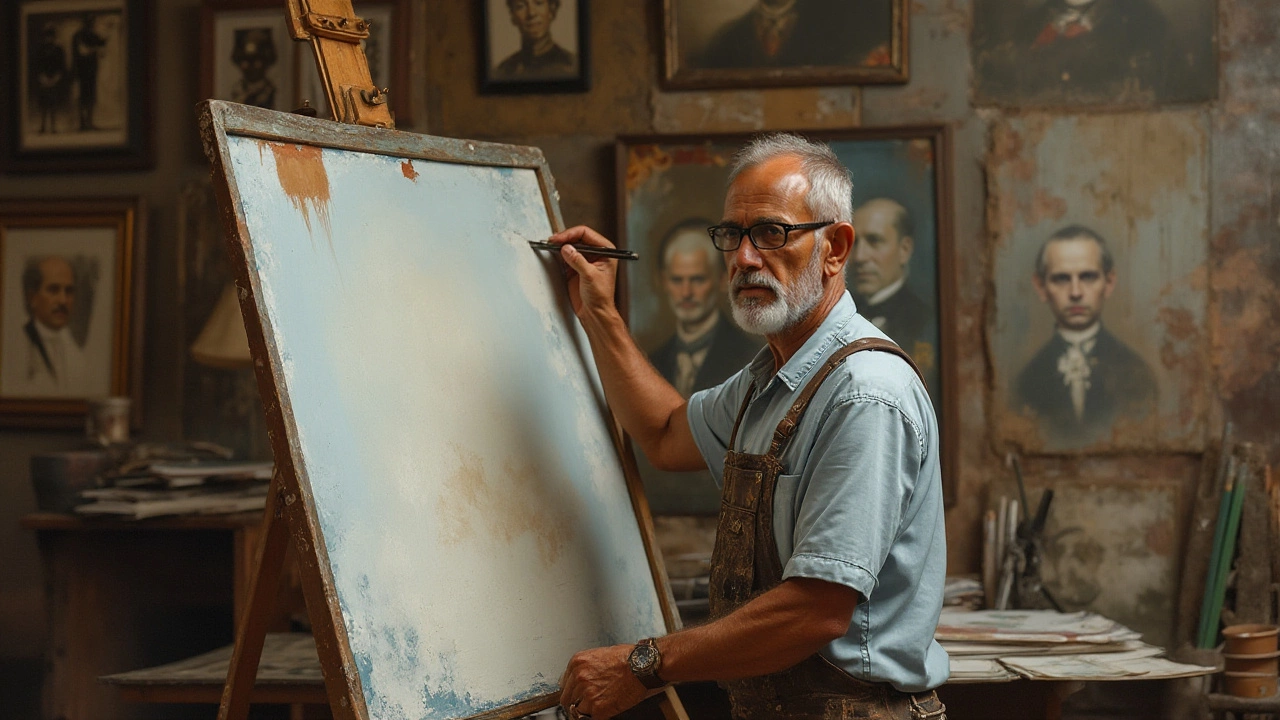
The Impact of Size on Emotion and Perception
Portrait painting is a dance between the artist's intent and the viewer's interpretation. One silent but powerful partner in this dance is the size of the portrait. A painting's dimensions can echo the presence of the subject or gently whisper their subtle charms. Large portraits command visibility, immersing viewers into every detail; they invite scrutiny and admiration, making them lean closer to appreciate brushwork and nuances. Consider, for example, the monumental works of artists like Chuck Close, who magnified human faces so greatly that pores become vast textures, translating the ordinary into the epic. This change in size not only transforms the visual experience but can evoke deep emotional reactions. As viewers, we often find ourselves drawn into a larger portrait, experiencing the grandeur of presence and personality on an intensified level.
Conversely, smaller portraits often exude intimacy. They create a personal connection, drawing viewers in, making the experience feel exclusive—as if uncovering a cherished secret known only to a few. This intimate scale is reminiscent of traditional locket portraits, where lovers would carry miniature paintings of their significant others, a practice that though rare today, shows how size plays an intimate role in art. Engaging with such portraits can be akin to whispering a secret to a dear friend, a tender moment shared, captured forever on a seemingly modest canvas. As John Berger, the renowned art critic, once suggested,
"The way we see things is affected by what we know or what we believe."
This ties beautifully back to how different scales can elicit varied perceptions and beliefs about the subject or the story being told through the art piece.
Breaking down the emotional implications of size, it is fascinating to observe how artists use dimensions to guide viewers' perceptions. A large canvas can make a figure appear powerful or overwhelming, commanding respect and attention. In contrast, a smaller composition often humanizes its subject, making them approachable and relatable. This interplay between size and emotional depth has been utilized by countless renowned artists throughout history. Consider the grand equestrian portraits by Peter Paul Rubens, where heroes are depicted in larger-than-life settings that enhance their nobility and valor. Understanding this, contemporary artists harness the dynamic potential of portrait size to elicit desired emotional responses from their audiences, ensuring the viewer not only sees but feels the essence of the subject captured within the frame.
From a practical perspective, the choice of portrait size equally affects where and how art is displayed. Larger artworks demand space and prominence, often positioned where they can become focal points of a room or gallery. They dominate and absorb attention, demanding interaction from a wide audience, almost insisting on a dialogue between the viewer and the art. Smaller portraits find their places in more intimate settings, perfect for personal contemplation. They tuck comfortably into alcoves, cozy corners of homes, or smaller walls, transforming these spaces into personal galleries where the message of the art can resonate on a quieter, more personal level. The deliberate selection of size thus becomes a critical decision in the creative process, shaping the art’s eventual home and its interaction with its surroundings.
Ultimately, whether large or small, the decision rests with the artist's vision and the emotional journey they wish to embark on. Each portrait size offers a different lens, shifting the focal distance and emotional tone. As with all artistic endeavors, connecting with the audience and conveying the intended mood through scale is less about rigid rules and more about the thoughtful interplay of composition, space, and story.
Practical Tips for Artists
Embarking on the journey of portrait painting is as much about technique as it is about the thoughtful selection of canvas dimensions. Portrait size is a crucial decision that can influence the viewer's connection with the artwork as well as the logistical aspects of its creation and display. When planning your next project, start by considering the ambiance and message you want your portrait to convey. Is it meant to dominate a room? Or whisper intimately to an observer? This can guide your choice significantly.
Consider using sketching as a prelude to painting. Small-scale sketches help artists experiment with composition and details, and can be a less daunting (and quicker) way to trial different perspectives and proportions. These preliminary drafts can save a significant amount of time and frustration once you begin working on the full-sized canvas. Some experts suggest that one should spend 10% of the total project time in preparation, sketching being a large part of this process.
The material of your canvas or paper is another component not to be overlooked. Canvas offers a durable and versatile medium for portraiture and pairs well with both oil and acrylic paints. For those who prefer a more detailed approach, paper might be suitable, especially when using pencils, charcoal, or pastel. Artists are advised to choose materials that suit not only their technique but also the desired effect of the portrait painting.
An interesting note from history comes from artist John Singer Sargent, who said, "Every time I paint a portrait I lose a friend," highlighting the complexities and nuances in portraying human likeness and emotions. Sargent’s work often featured large-scale portraits that communicated grandeur and prominence, showcasing how the choice of size can communicate aspects of the subject's character.
For artists who trade or exhibit their works, logistical factors such as transportation, storage, and potential framing should influence the choice of size, too. Larger works can be impressive but challenging to manage, while smaller pieces may offer versatility. According to a survey from the Art Gallery Society of New South Wales, about 60% of contemporary exhibitions favor medium-sized portraits, as they balance impact with practicality.
Lastly, don't shy away from seeking feedback from peers or mentors. A fresh pair of eyes can offer perspective and highlight elements you might have overlooked. Engaging with a community can yield advice on new techniques or trends in canvas dimensions that can inspire your creative process. With these practical tips, artists can confidently approach their craft, balancing historical influences with personal expression to create pieces that resonate both aesthetically and emotionally.
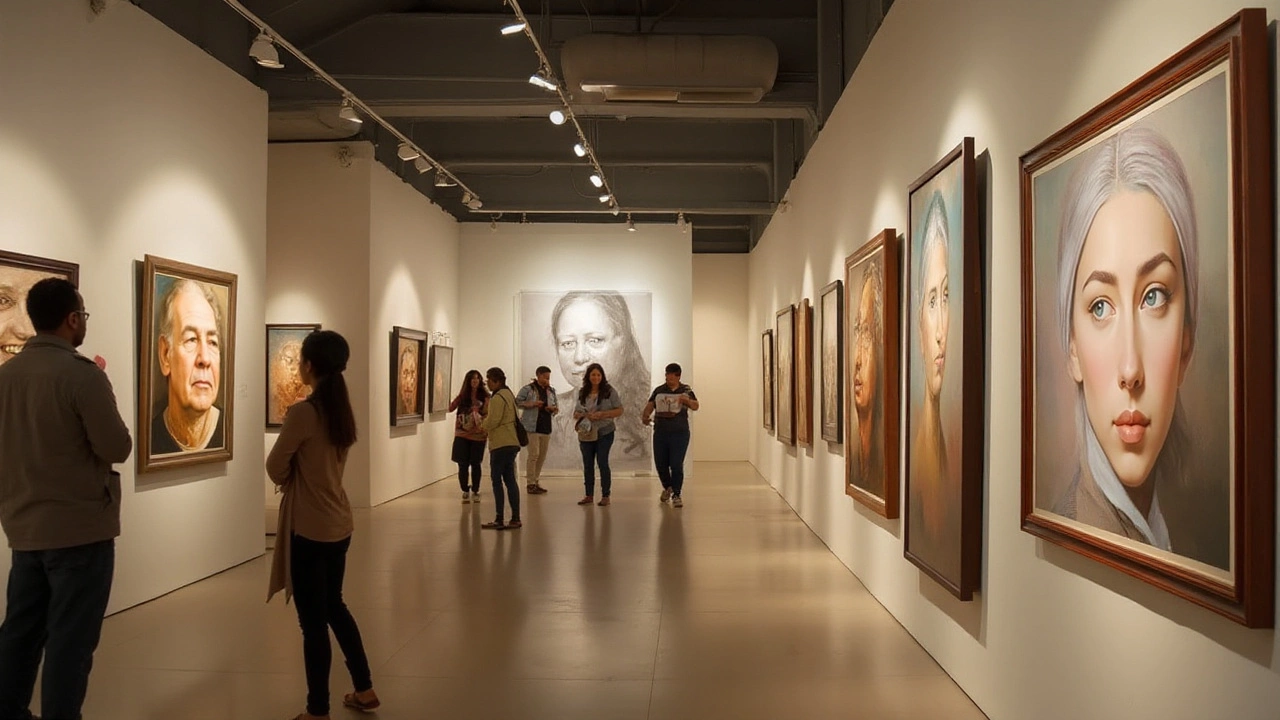
Adapting to Modern Spaces and Styles
As we navigate the vibrant world of contemporary art, adapting portrait painting to suit modern spaces and styles has become increasingly significant. In the past, grandiose portraits often adorned the walls of stately homes and galleries, meant to convey wealth and power. Today's world, however, often values versatility, portability, and the ability to integrate art seamlessly into varied settings. The shift towards smaller living spaces in urban environments has forced artists to reconsider how size influences not just aesthetics, but practicality as well. Portraits now often need to fit into cozier interiors, where every inch is accounted for, prompting interesting considerations in frame selection and canvas dimensions.
Choosing the right size for portraits today isn't just about the physical size of the canvas dimensions; it's about making an impact in spaces where the walls might serve multiple purposes. Artists are considering how their work interacts with its surroundings, often embracing minimalism to allow their work to breathe in crowded quarters. Additionally, there's a growing trend towards modular artwork, which can be rearranged to suit one's ever-changing tastes and spatial confines, a concept warmly welcomed in modern homes.
Modern technologies and materials have also expanded the possibilities, offering more sustainable and flexible options. Lightweight and durable materials mean that larger portraits can still be considered, as they are easier to manipulate and hang than ever before. In fact, the use of digital resizing prior to commencement allows artists to envision their final composition within a given space, aiding in decisions that maximize both emotional and spatial impact. Emphasizing the right portrait size can add layers of meaning and connection to contemporary artistic expression, adapting well to both traditional aspirations and modern needs.
"Art must be an integral part of life, reflecting the values of the space and the people who inhabit it," notes renowned art critic Richard Hamilton, highlighting the importance of thoughtful adaptation in current creative endeavors.
Moreover, today's artists are pushed to consider how their works can coexist with advanced interior design trends and smart home technologies. Interactive artworks, where portrait elements change under different lighting or are adjustable via apps, are taking root, challenging the conventional static nature of portraiture. Propelling this evolution are collaborations with designers and tech innovators, providing artists with fresh perspectives on how to achieve striking results. These pioneering ideas ensure art isn't just seen but experienced, adapting fluidly across both traditional and contemporary styles.
Engaging younger audiences also requires an agile approach, one that marries tradition with experimentation. With social media platforms influencing what becomes popular, smaller, more photogenic portraits often become focal points of personal expression within modern spaces. Artists can harness this influence by creating pieces that are easily shareable but retain their essence outside the digital realm. Such adaptability keeps portrait art alive and relevant in a rapidly evolving aesthetic landscape, ensuring that it continues to captivate diverse audiences and trends in today's art scene.
